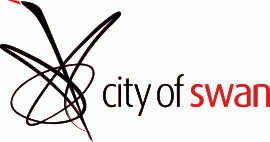City of Swan (Swan)
 |
32.7% of the City of Swan population was born overseas, compared with 36.1% for Greater Perth.
The largest non-English speaking country of birth in the City of Swan was India, where 3.1% of the population, or 4,163 people, were born.
The City of Swan was formed on 20 February 1970 as the Shire of Swan with the amalgamation of the Shire of Swan-Guildford and the Town of Midland. It assumed its current name when it gained city status on 25 April 2000.
On 1 July 2016 the portion of Noranda north of Widgee Road was transferred to the City of Bayswater.
Map - City of Swan (Swan)
Map
Country - Australia
 |
 |
| Flag of Australia | |
The ancestors of Aboriginal Australians began arriving from south east Asia approximately 65,000 years ago, during the last ice age. Arriving by sea, they settled the continent and had formed approximately 250 distinct language groups by the time of European settlement, maintaining some of the longest known continuing artistic and religious traditions in the world. Australia's written history commenced with the European maritime exploration of Australia. The Dutch navigator Willem Janszoon was the first known European to reach Australia, in 1606. In 1770, the British explorer James Cook mapped and claimed the east coast of Australia for Great Britain, and the First Fleet of British ships arrived at Sydney in 1788 to establish the penal colony of New South Wales. The European population grew in subsequent decades, and by the end of the 1850s gold rush, most of the continent had been explored by European settlers and an additional five self-governing British colonies established. Democratic parliaments were gradually established through the 19th century, culminating with a vote for the federation of the six colonies and foundation of the Commonwealth of Australia on 1 January 1901. Australia has since maintained a stable liberal democratic political system and wealthy market economy.
Currency / Language
| ISO | Currency | Symbol | Significant figures |
|---|---|---|---|
| AUD | Australian dollar | $ | 2 |
| ISO | Language |
|---|---|
| EN | English language |















